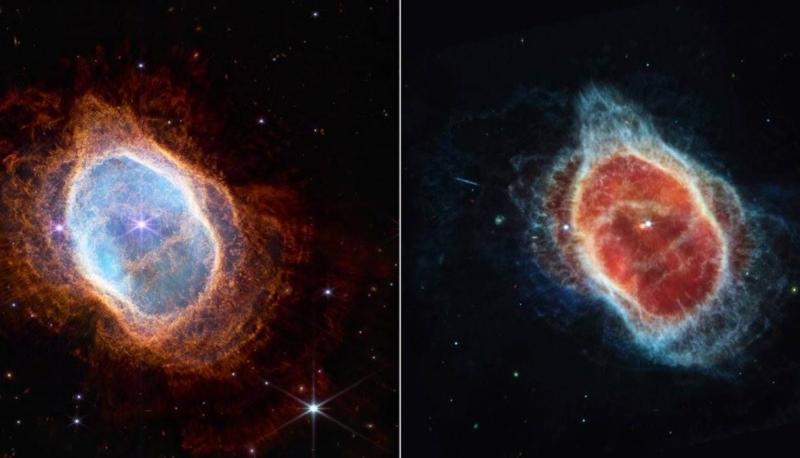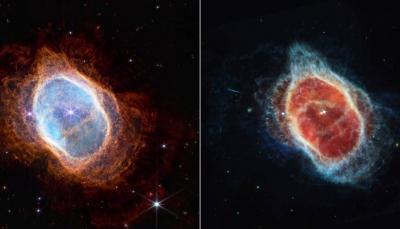A student interested in the topic asked The Conversation whether the James Webb Space Telescope could see the beginning of time if it were ten times larger. In response, Adi Ford, an assistant professor in the Department of Astronomy and Astrophysics at the University of Maryland, stated, "The James Webb Space Telescope is one of the most advanced telescopes ever built. Planning for it began over 25 years ago, and the efforts to construct it took more than a decade. It was launched into space on December 25, 2021, and within a month, it reached its final destination: 930,000 miles (about 1.5 million kilometers) from Earth. Its position in space allows it to observe the universe relatively unobstructed.
The design of the telescope was a global effort led by NASA aiming to push the boundaries of astronomical observation through revolutionary engineering. Its mirror is enormous, measuring about 6.5 meters in diameter, which is nearly three times the size of the Hubble Space Telescope launched in 1990 and still operational today. The James Webb Space Telescope is so large that it can "see" the most distant and faintest galaxies and stars in the universe. Its advanced instruments can reveal information about the composition, temperature, and movement of these distant cosmic bodies.
How far back can the James Webb see? Approximately 13.5 billion years.
### Time Travel
Telescopes do not show stars, galaxies, and exoplanets as they are now. Instead, astronomers get a glimpse of how they were in the past. Light takes time to travel through space and reach our telescopes. This means that looking at space is also a journey back in time. The farther a luminous object is, the longer its light takes to reach us. For this reason, the light we see from our closest star, Proxima Centauri, is 4 years old. Recently, the James Webb Space Telescope observed Earendel, one of the farthest stars ever discovered, with light that is about 12.9 billion years old.
The James Webb Space Telescope views far more distant times than was previously possible with other telescopes, such as the Hubble Space Telescope. Although Hubble can see objects 60,000 times fainter than the human eye, the James Webb Space Telescope can see objects nearly nine times fainter than what Hubble can.
### The Big Bang
Is it possible to see back to the beginning of time? The Big Bang is a term used to define the beginning of our universe as we know it, believed by scientists to have happened about 13.8 billion years ago. It is the most accepted theory among physicists to explain the history of our universe. The environment immediately following the Big Bang was similar to a cosmic fog that covered the universe, making it difficult for light to travel outward. Eventually, galaxies, stars, and planets began to grow. This is why this era in the universe is referred to as the "cosmic dark ages," according to Ford. As the universe continued to expand, the cosmic fog began to clear, allowing light to eventually travel freely through space. A few satellites have detected the light left over from the Big Bang, about 380,000 years after it occurred. Those telescopes were designed to detect the residual glow from the Big Bang that can be tracked in the microwave range.
However, even after 380,000 years post-Big Bang, there were no stars or galaxies. The universe was still an extremely dark place. The cosmic dark ages did not end until several hundred million years later when the first stars and galaxies began to form.
### Design Goals
The James Webb was not designed to observe back to the time of the Big Bang but rather to see the period when the first objects in the universe began to form and emit light. Before this time period, there was little light for the telescope to observe, given the conditions of the early universe and the scarcity of galaxies and stars.
Returning to the time period close to the Big Bang is not just about having a larger mirror; astronomers have done this using other satellites that monitored the afterglow of the microwave emissions shortly after the Big Bang. Thus, observing the universe merely a few hundred million years after the Big Bang is not a limitation of the James Webb telescope but is its mission. It reflects where we expect to see the first light from stars and galaxies.
By studying ancient galaxies, scientists hope to understand the unique conditions of the early universe and gain insights into the processes that allowed them to flourish. This includes the evolution of massive black holes, stellar lifecycles, and the components of exoplanets – worlds beyond our solar system, according to Ford.




